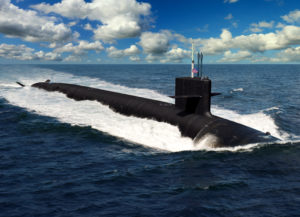The House’s top appropriator introduced a new stopgap funding bill on Monday that would keep the government open through March 11 as lawmakers continue work to finalize fiscal year 2022 spending legislation.
The current continuing resolution is set to expire on Feb. 18. The new bill also includes a $1.6 billion anomaly to prevent delays to the Columbia-class submarine program.

“We are close to reaching a framework government funding agreement, but we will need additional time to complete the legislation in full,” Rep. Rosa DeLauro (D-Conn.), chair of the House Appropriations Committee, said in a statement.“This continuing resolution – the product of bipartisan, bicameral negotiation – extends funding through March 11 to keep the government up and running while Congress completes our important work.”
Lawmakers have yet to strike a deal for FY ‘22 spending bills, with Republicans reiterating calls for prioritizing setting parity between defense and nondefense spending increases in any final budget framework.
Senior Pentagon officials told the House Appropriations Defense Subcommittee last month that the potential impact of having to operate under a year-long CR would lead to tens of billions of dollars in lost purchasing power and delays to hundreds of programs (Defense Daily, Jan. 12).
The Navy, specifically, has said a year-long CR would have a “dramatic impact” that would include cutting $500 million from the Columbia-class submarine program (Defense Daily, Jan. 27).
Mackenzie Eaglen, a senior fellow at the American Enterprise Institute, noted Monday that a new mid-March deadline would represent nearly half-a-year of operating under a CR, which locks in spending at the FY ‘21 level and blocks the Pentagon from starting new programs.
“I’m not sure that’s going to be enough to get this over the finish line either. There’s still no framework deal, not just on the [policy] riders, which I think are actually pretty easy to solve, but on parity or not for defense and nondefense discretionary [spending]. And if they can’t get there now, I just don’t know if they can get there ever,” Eaglen said during a Center for Strategic & International Studies discussion on the defense budget with several other defense experts. “Ultimately, I think appropriators are optimistic so I’m going to cheer for that. Because, obviously, I think it would be a disaster of epic proportions for the Defense Department, uniquely, for so many reasons.”